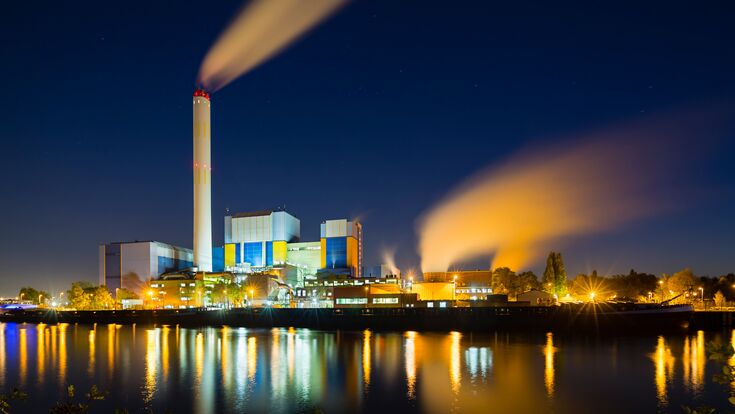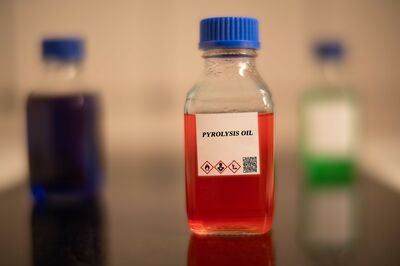Interview Waste to Energy : “WtE must be part of a total waste management system”

First of all, could you tell us about the ISWA Working Group on Energy Recovery: when was the group founded and what are its main goals?
The group was founded around 1980 to spread knowledge about the technology and its results and effects. Now we work with that fact-spreading and development of the technology to be able to respond to the demands of today’s society. We work with framework conditions and provide information to decision-makers and industrial actors.
Who is part of the working group?
Operators, technology providers, owners, academia, consultants and in general people who work in and around the WtE solutions and industry. There are usually between 30 and 50 of us representing up to 20 countries in the working group meetings.
Who can join the working group?
It is in principle open to all members of ISWA or anyone from member companies of ISWA. It is of course an advantage to have a job that brings you into contact with WtE, but that is not really a requirement.

The ISWA Whitebook on Waste to Energy is to be published soon. Can you already talk a bit about it: How long did the group work on it? What are the main topics? What are the key findings?
I think we have spent five to six years discussing it and the last three years developing it. The aim is to spread knowledge about different WtE technologies, the advantages and disadvantages, and to provide useful guidance when you are considering WtE. It is also about the prerequisites and framework conditions that you have in place for your choice.
The key findings are that you must adapt your WtE to a total waste management system; it is not a solution in itself, it must be part of a total system.
Also, we recommend the grate technology due to reliability and up-time requirements, as the nature of waste management demands high up-time and low and stable emissions. Many of the other technologies have not been able to demonstrate a “complete” process or very high reliability.
How has WtE developed over time?
It originally started as a health measure in the 1930s, as incineration destroyed the bacteria and dangerous substances in waste. Then in the 1950s the operators started to recover the energy, both as electricity and heat – heat mainly in Sweden and Denmark.
In the 1970s the focus moved to emissions, and emissions control and equipment came into place during the 1970s and 1980s, both on sulphur, dioxins, etc. It has developed into the industry that may well have the strictest emission demands of all industries, and the industry is able to fulfil them, according to directives and BREF/BAT policies in the EU.
During the 1990s and 2000s, development was very focused on the energy efficiency of plants, to deliver as much electricity as possible and also heat delivery.
Over the last 30 to 40 years, many of the new plants have also had a strong focus on architectural expression and build.
For the last six to seven years we have seen the development of CO2 accounting and carbon capture demands, and we will soon see the first full-scale carbon capture plants for WtE.
What basic requirements should all WtE plants meet?
High availability, low emissions, energy efficiency and good relationships with the society around them. And also, as mentioned before, they should be part of a total waste management system.
Can residual waste be incinerated without auxiliary fuel?
Yes, you just need it to start the process; when the process is stable, it is self-sustainable.
How can the energy efficiency of a WtE plant be increased?
Through process development, technological solutions and delivering heat as much as possible after delivering electricity. This is not just one measure; what’s needed are good operations and good planning as part of a society and the potential energy customers for both heat and electricity.
What types of waste should be treated in WtE plants?
Residual waste after sorting processes that remove as many recyclables as possible. This is dependent on the rest of the waste management system that it is part of. The Waste to Energy plant can be the final sink for most of the waste, so the need for landfill disappears, as has been shown in Northern Europe.
The basic requirements for WtE plants are: High availability, low emissions, energy efficiency and good relationships with the society around them. And they should be part of a total waste management system.Johnny Stuen, ISWA working group Energy Recovery
What kind of proven WtE technologies are available and which are the most common?
Grate technologies are the most widely available and the most common. You also have two-stage gasification and incineration, but that is for smaller volumes of waste and the technology has had trouble showing that it is as reliable as grate technology. There are also some fluidised bed technologies, but those more or less require homogenous fractions.
What new or innovative technologies are available and what distinguishes them from incineration? Are they feasible?
Not yet; gasification to syngas, pyrolysis, etc. has not been shown to work on an industrial scale yet. They might be feasible in the future, but more development is needed.

Is mechanical-biological waste treatment (MBT) an alternative?
Not really, as this still leaves large residuals that are not sorted well enough and that have to be disposed of. Then you still need a WtE to avoid the landfill, even though it may be a little smaller.
Could landfills with the utilisation of biogas be a viable alternative to waste disposal?
No, not really, as complete collection of methane from the landfill is very expensive and also impossible. One tonne of mixed municipal waste forms around 2.5 tonnes of CO2 eq. in methane over a few years, and WtE reduces that to 1 tonne, and adding carbon capture to that takes that away as well.
What about dioxins from WtE?
That has been taken care of since the end of the 1980s. Very high emission control, advanced flue gas treatment and also very high emission demands from the authorities have taken this question off the table. The emission of dioxins from WtE has been shown to be undetectable, both in the short and long term, through many different measurement projects.
What ways are there to deal with the residues and are new methods being developed?
Today, the metals are separated from the bottom ash, and the mineral part is used as an addition to concrete products or as a foundation for road plans, etc.; this is very dependent on the country, as there are different regulations for different countries. There is development happening on more and more efficient use of the mineral part, but that is not ready for industrial applications yet. There are two possible ways to treat bottom ash, wet and dry. The dry process has been developed to extract even more metals from the bottom ash successfully, but it is not very widespread yet.
For the fly ash, several processes have been developed over the last decade to take out the metals (zinc, lead, etc.) and recycle them, and also using the mineral part as an addition to cement production. It is still early days, but we have seen the first industrial-size plant installed in Sweden in the last year. The process is more complex to develop, and also a bit more difficult due to the lower volume and the toxicity of the fly ash.
All in all, there has been quite speedy development to increase recycling of all parts of waste from the WtE process.
Especially in regard to the energy crisis, what significance does WtE have in the energy supply?
It may be a good addition to the base energy in the grid, and is a very reliable part of the system. It does not deliver enough alone, but it can increase the “local” content in the energy mix, and thereby the delivery safety.
What do you think about waste incinerators being included in the EU ETS?
It is expected; it will all come down to cost, which has to be covered by the WtE customers – in most cases, the public – as WtE plants are dependent upon gate fees for their operation. I think it is unavoidable in a society that must reach net-zero before 2050.
Carbon capture is widely discussed in connection with WtE and there are plants that work with the technology. What are the results so far?
The technology is ready and available, and the first projects have started, but none is operating at full scale yet. We also see that some countries are developing value chains that actually work for this technology, for instance the Scandinavian countries and the Netherlands.
How do you see the future of CCUS, especially in connection with WtE?
A licence will be needed to operate in the future.
Can WtE be part of sustainable waste management?
It is, and still will be. It is much more sustainable than any form of landfill, and will be even more developed in terms of recycling of the residuals. There will still be large amounts of mixed, unrecyclable waste for the foreseeable future. Processes are being developed that may be a good addition to WtE, but I do not think it will be obsolete for some generations yet. Let’s get rid of landfill first.



